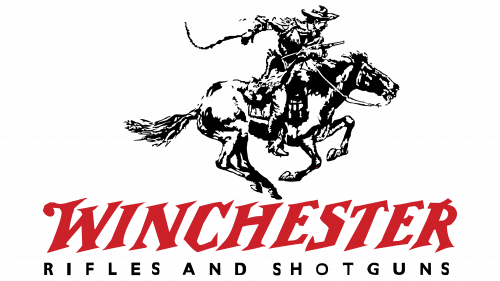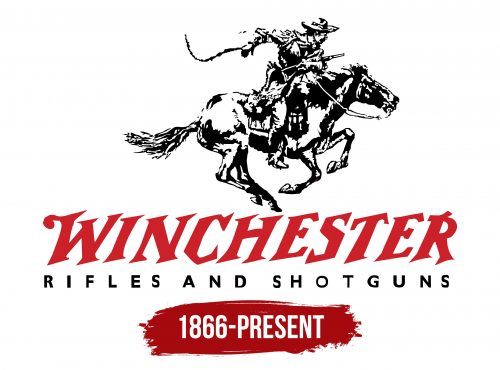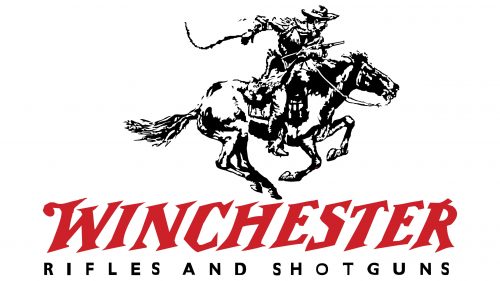The Winchester logo does not reflect the brand’s difficult history or the complex type of products it represents – on the contrary, everything in it is light, serene, and simple. This is how the company aims to convey to consumers that its products solve problems and make life easier while adding a romantic cowboy charm.
Winchester: Brand overview
Oliver Winchester established the Winchester Repeating Arms Company in New Haven, Connecticut, in 1866, marking the beginning of Winchester’s history. But the company’s history dates even further back to 1849, when Horace Smith and Daniel Wesson (who would go on to build Smith & Wesson) established the Volcanic Repeating Arms Company, a manufacturer of rifles and revolvers with lever actions.
Oliver Winchester, a prosperous shirt manufacturer, invested in Volcanic in 1855 and became the company’s largest shareholder. He reorganized the business into the New Haven Arms Company when it filed for bankruptcy in 1857.
The Henry gun, created by Benjamin Henry in 1860, was the company’s first big hit. This rifle, which uses a rimfire cartridge in the .44 caliber, gained popularity during the American Civil War.
The Winchester Repeating Arms Company was established in 1866 when the firm introduced the Model 1866, an enhanced Henry rifle dubbed the “Yellow Boy” because of its brass frame. This gun launched a storied line of rifles and was the first to carry the Winchester name.
Introduced in 1873, the Model 1873 became one of the most popular and well-known rifles. This type, sometimes called “The Gun that Won the West,” was crucial to the settlement of the American West.
In the 1880s and 1890s, the manufacturer continued to develop new rifle models, such as the Model 1886, created by John Browning, and the Model 1894, which became one of the most popular firearms in history.
William Wirt Winchester, Oliver’s son, assumed leadership of the business upon Oliver’s death in 1880. But William died from illness in 1881, leaving his wife, Sarah Winchester, in charge of the business.
Further development and invention occurred in the early 20th century. When the enterprise started manufacturing its ammunition in 1903, it gained complete control over the manufacture of firearms.
The company was a major producer of rifles and ammunition for the Allies during World War I, which helped to outfit those forces.
The corporation faced difficulties during the 1920s. 1931, the enterprise filed for bankruptcy due to the economic downturn and the post-war decline in the firearms market.
The Olin family’s Western Cartridge Company purchased the business in 1931. Under the new leadership, the manufacturer maintained its production of weapons and ammunition.
With the production of M1 Garand rifles and M1 carbines, the firm emerged again as a significant gun supplier to the US military during World War II.
In the years following World War II, the company continued to create new gun types, including the well-liked Model 70, also known as “The Rifleman’s Rifle.”
The manufacturer experienced financial troubles during the 1960s and 1970s. Gun manufacturing in New Haven stopped in 1981, but the brand name persisted under different ownership.
The Belgian firm FN Herstal purchased the rights to the Winchester brand in 1989 and manufactured a few vintage variants.
The Winchester Repeating Arms Company, then a division of Olin Corporation, continued to make its iconic rifle models, like the Model 70 and Model 94, until 1990. These versions demonstrated the brand’s dependability and longevity and became popular among hunters and collectors.
The Model 70 Classic Featherweight was first released by the enterprise in 1992. Because it was lighter than the conventional type 70, this type became well-liked by hunters who appreciated comfort and ease of use on extended hikes.
To commemorate its 130th anniversary, the manufacturer released a limited edition of Model 94 rifles in 1996. Due to their unique commemorative inscriptions and engravings, these guns are in great demand among collectors.
There was a turning point for the firm in 2000. The Belgian business FN Herstal purchased the Winchester brand and associated assets from Olin Corporation. The need for corporate restructuring and the escalating competitiveness in the weapons industry led to this decision.
In 2006, rifle production was temporarily discontinued in the United States. The rifle facility in New Haven, Connecticut, closed after 140 years of operation. This incident substantially influenced gun collectors and enthusiasts.
On the other hand, rifle manufacturing was restarted in 2008. FN Herstal started producing a few variants at its Columbia, South Carolina facility, which allowed the company to carry on the brand’s heritage and preserve its position in the American market.
The XPR was a new rifle variant that debuted in 2010. This rifle was created as a more cost-effective substitute for the vintage Model 70 while yet upholding the brand’s reputation for superior quality and accuracy.
The company commemorated its 150th anniversary in 2016. To commemorate the event, a unique anniversary line of rifles and ammo was developed, showcasing the brand’s illustrious past.
The enterprise launched a new Copper Impact ammunition line in 2019 as part of its ongoing innovation efforts. Because they are lead-free and constructed of solid copper, these bullets were created with hunters who care about the environment in mind.
Winchester Repeating Arms debuted the Model 70 Long Range MB (Muzzle Brake) in 2020, an upgraded version of the well-liked Model 70. This variant has a muzzle brake to greatly lessen recoil, and it was made especially for long-range shooting.
In 2021, the Wildcat series was added to the company’s ammunition lineup. These bullets were designed to increase accuracy and performance for small game hunting and were made for popular small game calibers.
The manufacturer made a huge technological advancement in 2022 when it introduced a new coating technique for their rifles known as “Weather Shield.”
With the introduction of an online platform for customizing firearms in 2023, the brand significantly advanced in digitalization. Before placing an order, consumers could use this platform to construct unique weapon configurations by choosing different choices and attachments.
In 2024, the company prioritized sustainability. It declared that it would implement greener production techniques, such as utilizing recycled materials for packaging and cutting carbon emissions during manufacture.
Meaning and History
What is Winchester?
It is an iconic American brand known for its firearms and ammunition. Founded in the 19th century, the company became famous for its lever-action rifles, referred to as “the guns that conquered the West.” The company produces a range of firearms, including rifles, shotguns, and pistols, as well as ammunition for hunting, sport shooting, and self-defense. It is known for its significant contributions to the advancement of firearms technology. The brand is prominent in American history and is a leading name in the firearms industry.
1866 – today
The Winchester logo has a simple and complex history. It is simple because it has successfully fit into the firearms and ammunition industry and has never disappeared from view. The complexity lies in the fact that it represents a multi-component image, conveying the type of weapon, its purpose, conditions of use, consumer segment, and mood. In this way, many meanings are concentrated in a single symbol. This is because its creator was well-versed in the subject matter.
As a result, the iconic emblem, Horse and Rider, has remained the most recognized in the industry for many years. The image of a cowboy riding a horse has become an integral part of the world, like the sun, fields, mountains, and sky. The rifle clutched in his hands is interpreted differently depending on the viewer’s perspective. It can serve for personal protection, maintaining safety, hunting, and many other purposes. In any case, the drawing is emotionally vivid and memorable.
The foundation of Winchester’s visual identity is the image of a man in a hat riding a horse galloping at full speed to the right. The figures are presented in full detail, giving them a realistic appearance that resembles a painting, as they are drawn with many lines and depth. The black-and-white palette adds drama to the emblem, reflecting the tension that radiates from it. Overall, it has all the hallmarks of fine art and is perceived as a masterpiece.
Below the horse and rider is the name of the firearms company. It is highlighted in red to catch the eye immediately. Additionally, to attract attention, the designers introduced several original features:
- They added flared ends to the letters, replacing traditional serifs;
- The top edges are slanted to the left, while the glyphs slant to the right;
- The characters are placed at varying heights to intensify emotional impact;
- They used a geometric-style font.
The designers also added elegant elements to certain letters—protrusions of different shapes. The “W” has a graceful bold dot, and the “R” has a single wide stroke at the top. Since these glyphs are at opposite ends of the word “Winchester,” they add harmony and balance to the name. The large capital letters evenly fill the space under the galloping horse and rider, serving as a platform for the image above.
Another inscription is located below in a second line. It is written in smaller, bold, simple, and smooth letters. This represents the primary product range of the firearms company: “Rifles and Shotguns.” The phrase is composed of uppercase black glyphs, which convey the seriousness of the manufacturer and its strict approach to technological standards. Thanks to the wide spacing between the characters, the text appears light and easy to read.
Although the black and red colors contrast sharply, they convey different emotions associated with firearms: passion, anger, strength, protection, confidence, courage, and fear. They are opposites, much like in real life. But from a color perspective, the rich red successfully balances the black, softening the monochrome effect.






